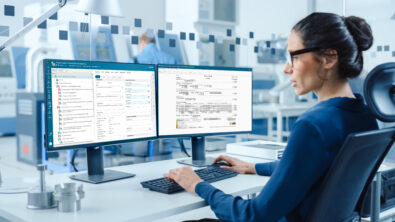Efficient and Effective Technical Publications

Technical publications groups have known that configuration-specific product documents have improved their end-user’s experience for decades. Since the early 1980’s, we’ve focused on adding intelligent tagging into document content to produce context-specific documents – making sure the documents for Widget don’t contain content regarding Thingamajig. Document schemas and industry standards continue to be developed to enable reuse and repurposing of this rich content. And real progress has been made, with measureable ROIs on component content management systems (CCMS) and the use of industry standards.
However, Tech Pubs department metrics still tend to focus on how far reuse can be pushed within a CCMS or how many attributes for conditional publishing are in use, when the goal really should be to shorten the document development cycle and improve the accuracy of this context-specific content. Major opportunities are being missed here.
For tech pubs authors and illustrators in manufacturing fields – whether they’re documenting airplanes, autos, computer components, cough syrup, medical equipment or semiconductors – the bulk of their time is spent:
• researching the product design and changes, and
• attempting to stay current with their product configurations.
In many industries, those tasks account for 50% or more of technical writers’ and illustrators’ time. Implementing XML, CCMS, and maximizing the reuse of information provide clear benefits. But these don’t have any real impact on the time spent researching.
Direct access to engineering and product data can dramatically reduce research time. At a minimum, Tech Pubs users can have access to the engineering data, be able to view the product/parts assembly lists and manipulate the 3D image of an assembly while it’s in design. A training or work instruction author can explode the 3D representation and make sure that the process steps they write match the steps needed to assemble the configuration. Illustrators can capture graphics directly from the 3D environment, add callouts and modify views. With access to this environment, they can be notified of changes to design and even link their document topics and illustrations to the product assemblies, so if those assemblies change, they know exactly what content needs to be reviewed and updated.
We now can take the concept of reuse even further, by using the content from the engineer directly, giving the Tech Pubs user the data to enhance, instead of convert or rewrite/redraw. New technologies and data formats like the JT ISO standard are available to create document content – text, 2D, 3D and animation components. By defining your publication preferences you can drag assembly processes directly into your procedures and see the result.in your document. Parts representations become available as 2D and 3D illustrations. And all of these come automatically aligned to product configuration and design changes, reducing the risk of inaccuracy.
Access to this rich engineering environment and the use of JT also enable more effective documents. While graphics may be worth a thousand words, animations are worth more, and have been shown to increase attention to the material and improve retention of learning and marketing messaging. Tech-Clarity’s articles on 3D use in technical publications and 3D use in training environments provide examples of the impact these rich graphics and animation components can have on users and business ROI.
Providing technicians in the field with 3D graphics and animation improves retention and reduces the time needed to learn or review procedures. These savings provide benefits back to the manufacturer as well, with fewer mis-ordered parts, fewer service and support calls, and improved customer satisfaction. In “Create a Process-Driven Digital Enterprise,” Aberdeen Group found that dynamic, context-driven publications created in Best-in-Class organization have reduced inquiries to customer support by 20% and increased product revenue by 18%. And these organizations are producing more content with fewer Tech Pubs staff.
We need to stop measuring Tech Pubs systems and efficiencies within the Tech Pubs environment alone and start include writers and illustrators as part of the overall product lifecycle. By bringing them into the PLM environment – really leveraging the engineering data and processes – we improve the effectivity and accuracy of technical publications, and reduce the time and effort needed to do it.
Trish Laedtke is the Product Manager for Content and Document Management applications in Teamcenter. Her focus is on integrating tech pubs and supporting roles into the PLM environment, and taking advantage of the knowledge stored in Teamcenter to provide more accurate and effective documentation.



